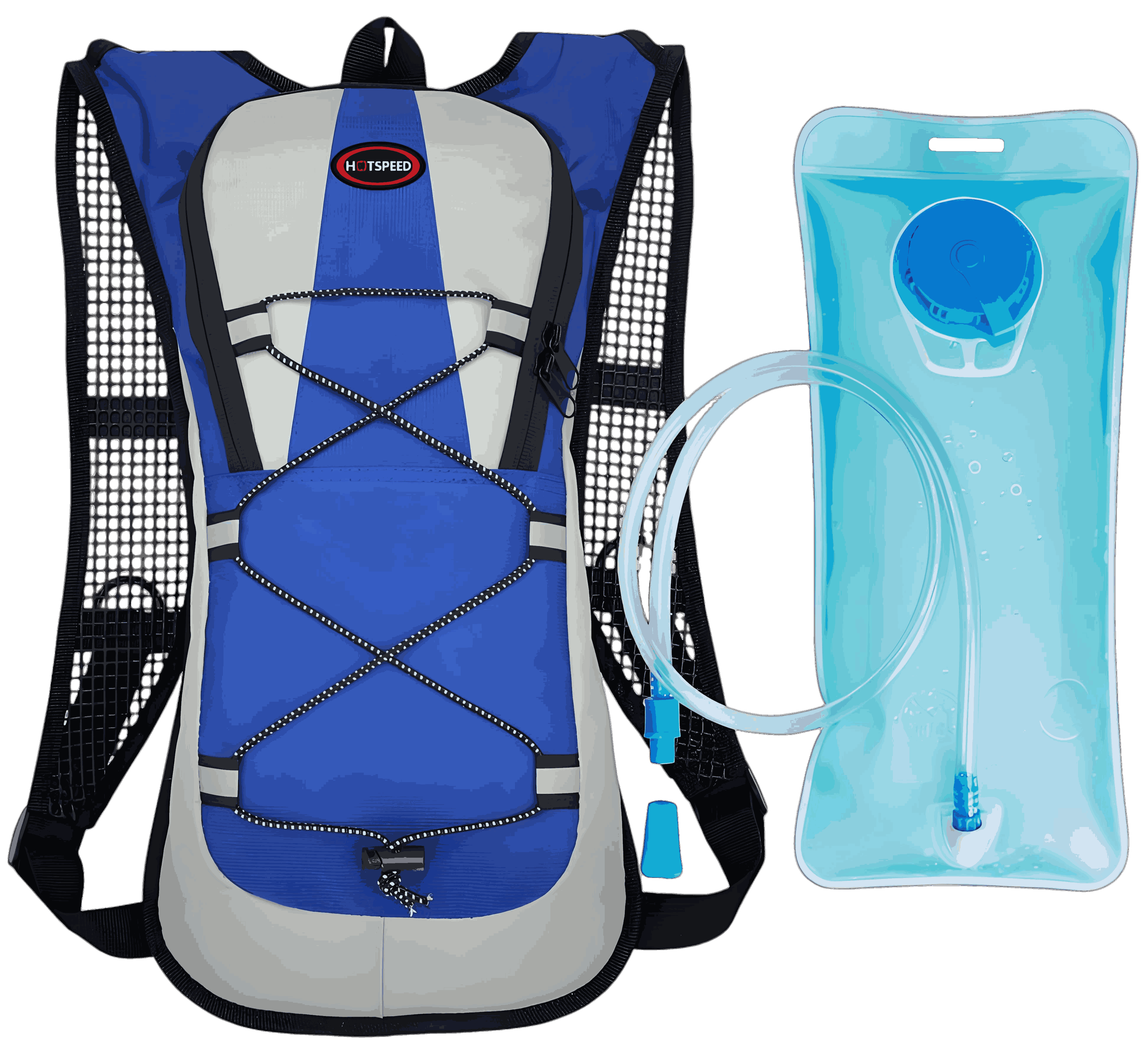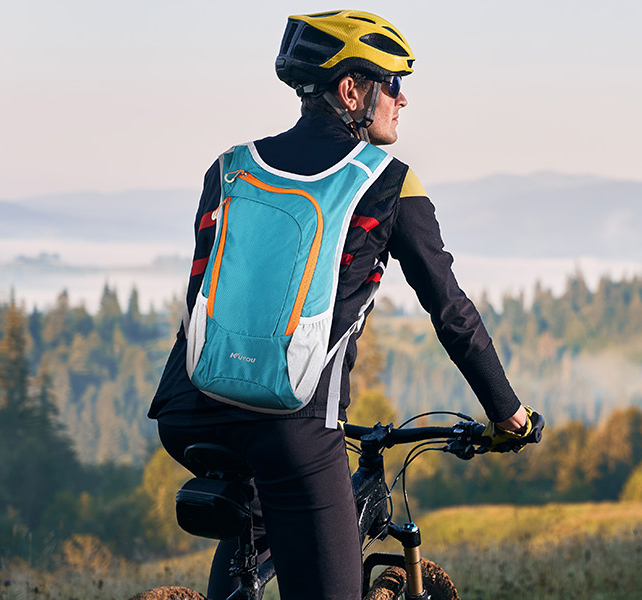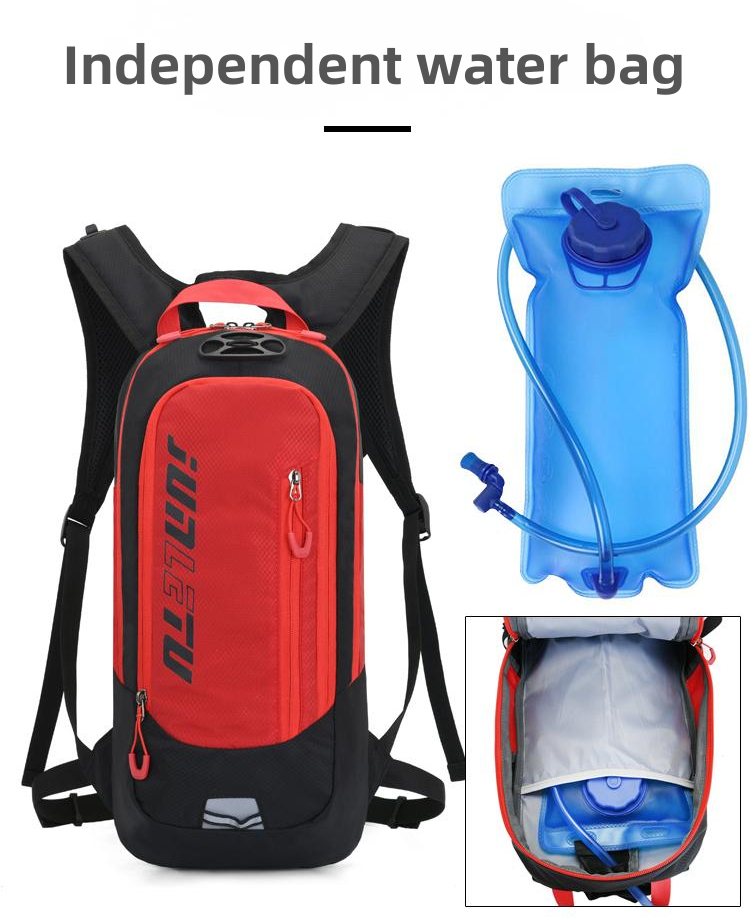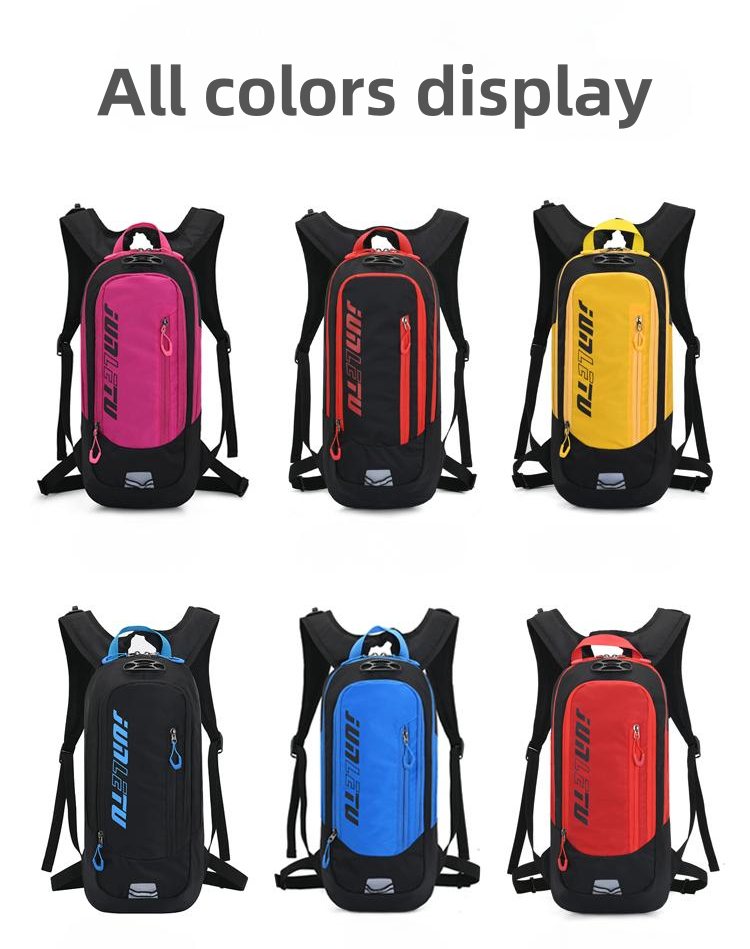As an avid hiker and outdoor gear enthusiast who’s spent countless hours testing equipment on trails, mountains, and urban adventures, I’ve come to appreciate the ingenuity of hydration backpacks. These clever packs, with their built-in water reservoirs and drinking tubes, have transformed how we stay hydrated on the move. Whether you’re scaling a peak, cycling through a desert, or just navigating a busy day, hydration backpacks offer a level of convenience and functionality that’s hard to beat. But what exactly makes them so practical? In this article, I’ll dive into the versatility, convenience, health benefits, and specialized uses of hydration backpacks, drawing from my own experiences and industry insights to help you understand why they’re a game-changer for so many activities.
Why Hydration Backpacks Stand Out
When I first started hiking, I relied on water bottles clipped to my belt or stuffed in my backpack. They worked, but they were clunky, hard to access, and often left me dehydrated because I’d avoid stopping to drink. Then I discovered hydration backpacks, and it was a revelation. These packs integrate a reservoir (or bladder) that holds water—typically 1-3 liters—with a drinking tube that lets you sip hands-free. Beyond hiking, their design makes them incredibly versatile for a range of activities, from sports to travel to emergency preparedness.
The practicality of hydration backpacks lies in their ability to address real-world needs: easy access to water, balanced weight distribution, and storage for essentials, all while keeping your hands free. Over the years, I’ve used them in scorching deserts, freezing alpine climbs, and even music festivals, and they’ve never let me down. Let’s explore the key ways these packs shine, with practical examples and tips to make the most of them.

The Practical Benefits of Hydration Backpacks
1. Hands-Free Hydration for Active Pursuits
One of the standout features of hydration backpacks is their hands-free drinking system. The drinking tube, often equipped with a bite valve, lets you sip water without stopping or fumbling with bottles. This is a lifesaver during activities where pausing isn’t practical or safe.
How It’s Practical:
Hiking and Trekking: On a steep ascent, stopping to dig out a bottle can disrupt your rhythm or even throw off your balance. With a hydration pack, I can sip while moving, staying hydrated without breaking stride. Studies, like one from the Journal of Sports Sciences, show that consistent hydration improves endurance by up to 20% during prolonged exercise.
Cycling: Cyclists can’t afford to take their hands off the handlebars on rough trails or busy roads. I’ve used hydration packs on long mountain bike rides, sipping through the tube while maintaining control.
Running: Trail runners benefit from the tube’s accessibility, avoiding the need to carry or open bottles. Many packs are designed as lightweight vests to minimize bouncing.
Pro Tip: Look for packs with magnetic tube clips or chest-mounted valves to keep the drinking tube secure and easy to reach. Clean the reservoir regularly with a cleaning kit to prevent mold, especially after using electrolyte drinks.
2. Balanced Weight Distribution for Comfort
Unlike water bottles, which can create uneven weight in a pack or on a belt, hydration backpacks distribute water weight evenly across your back. The reservoir sits close to your spine, aligning with your center of gravity, which reduces strain during long activities.
How It’s Practical:
Backpacking: On multi-day trips, I’ve carried 2-liter reservoirs alongside gear, and the balanced design kept my shoulders and hips comfortable. The American Hiking Society recommends evenly distributed loads to prevent fatigue and injury.
Skiing/Snowboarding: In cold environments, water bottles can freeze, but reservoirs tucked inside a pack stay insulated. The low center of gravity helps maintain balance on slopes.
Military/ Tactical Use: Soldiers and first responders use hydration packs for their ergonomic design, allowing them to carry water and gear without compromising mobility.
Real-World Example: During a 15-mile hike in the Sierra Nevada, my hydration pack’s padded shoulder straps and sternum strap kept the load stable, even with a full 3-liter reservoir. By contrast, a friend using water bottles complained of shoulder pain from an uneven backpack.
Comparison Table: Hydration Backpack vs. Water Bottles
|
Feature |
Hydration Backpack |
Water Bottles |
|---|---|---|
|
Access |
Hands-free, sip via tube |
Requires stopping, opening |
|
Weight Distribution |
Even, close to spine |
Uneven, can shift in pack |
|
Capacity |
1-3 liters, integrated |
0.5-1 liter per bottle, multiple needed |
|
Comfort |
Padded straps, ergonomic design |
Can dig into hips or shoulders |
|
Best For |
Long activities, hands-free needs |
Short trips, casual use |
3. Storage for Essentials Beyond Water
Hydration backpacks aren’t just about water—they double as functional backpacks with compartments for gear, snacks, tools, or electronics. This makes them incredibly practical for activities requiring more than just hydration.
How It’s Practical:
Adventure Travel: When exploring cities or remote areas, I use my hydration pack to carry a 2-liter reservoir, camera, snacks, and a rain jacket. The compact design fits under airplane seats or in crowded markets.
Music Festivals/Events: Hydration packs are a staple at festivals, where I’ve seen people carry water, sunscreen, and wallets in 10-20 liter packs. Some events even require clear bags, and many brands offer transparent reservoirs for compliance.
Work/Commuting: For bike commuters, hydration packs hold laptops, chargers, and water, keeping essentials secure. I’ve used a 15-liter pack for daily commutes, with a dedicated padded laptop sleeve.
Pro Tip: Choose a pack with multiple compartments and external loops for attaching gear like trekking poles or carabiners. For urban use, opt for sleek, low-profile designs to avoid looking overly tactical.

4. Health and Hydration Benefits
Staying hydrated is critical for health, and hydration backpacks make it easier to drink regularly. The Centers for Disease Control and Prevention (CDC) notes that proper hydration supports physical performance, cognitive function, and temperature regulation. By making water accessible, hydration packs encourage consistent sipping.
How It’s Practical:
Endurance Sports: During a half-marathon, I used a 1.5-liter hydration vest, sipping every 10 minutes to maintain energy. The constant access prevented dehydration, which can reduce performance by 10-15%, per Sports Medicine.
Hot Environments: In desert hikes, where temperatures hit 100°F, my 3-liter reservoir ensured I drank enough to avoid heat exhaustion. The insulated tube kept water cool, unlike bottles that warmed up quickly.
Kids and Families: Hydration packs designed for kids (with 1-liter reservoirs) encourage them to drink during outings, reducing the risk of dehydration-related fatigue.
Field Story: On a family camping trip, my niece struggled to carry a water bottle during a hike. I gave her a youth hydration pack, and she happily sipped through the tube, staying hydrated and energized all day.

5. Versatility Across Activities
Hydration backpacks are practical because they adapt to a wide range of scenarios, from extreme sports to everyday tasks. Their modular design—available in sizes from 5 to 50 liters—means there’s a pack for nearly every need.
How It’s Practical:
Extreme Sports: Climbers and kayakers use hydration packs for their low-profile fit and durability. I’ve seen packs with abrasion-resistant fabrics withstand rocky scrambles.
Emergency Preparedness: In disaster kits, hydration packs provide portable water storage and space for first-aid supplies. A 2-liter reservoir can sustain one person for a day, per FEMA guidelines.
Photography/Fieldwork: Wildlife photographers or researchers carry hydration packs to stay hydrated while hauling heavy equipment. A 20-liter pack I used for a photography trip held lenses, water, and a tripod.
Comparison Table: Hydration Pack Sizes and Uses
|
Pack Size |
Reservoir Capacity |
Best Uses |
Storage Features |
|---|---|---|---|
|
5-10 liters |
1-1.5 liters |
Running, cycling, short hikes |
Small pockets, minimal gear |
|
10-20 liters |
1.5-2 liters |
Day hikes, festivals, commuting |
Multiple compartments, laptop sleeve |
|
20-50 liters |
2-3 liters |
Backpacking, tactical, photography |
Large capacity, external loops |
6. Durability and Weather Resistance
Hydration backpacks are built to withstand tough conditions, making them practical for outdoor and rugged use. Most are made from nylon or polyester with ripstop reinforcement, and reservoirs use BPA-free, food-grade polyurethane.
How It’s Practical:
Weatherproofing: Many packs have water-resistant coatings or rain covers, protecting gear in sudden downpours. I’ve used a DWR-coated pack in heavy rain without leaks.
Reservoir Durability: High-quality reservoirs resist punctures and leaks, even under pressure. A 2-liter reservoir I dropped on a rocky trail held up perfectly.
Longevity: With proper care, hydration packs last years. I’ve had a 15-liter pack for over five years, still in great shape after countless trips.
Pro Tip: Choose packs with reinforced stitching and YKK zippers for durability. Rinse and dry the reservoir after every use to extend its lifespan.
Challenges and How to Address Them
While hydration backpacks are incredibly practical, they’re not perfect. Here are common challenges and solutions:
Cleaning Difficulty: Reservoirs can be tricky to clean. Use a cleaning brush and baking soda solution (1 tsp per liter) to scrub and deodorize.
Weight When Full: A 3-liter reservoir adds 6.6 lbs to the pack. Start with a 1-2 liter capacity for shorter activities to keep weight manageable.
Tube Freezing: In cold weather, the drinking tube can freeze. Use an insulated tube cover or blow water back into the reservoir after sipping.
Bulkiness: Larger packs can feel cumbersome. Test the fit in-store, ensuring adjustable straps and a snug fit to avoid bouncing.

Case Study: A Hydration Pack on a Desert Trek
To illustrate their practicality, let me share a story from a trek in Utah’s Zion National Park. The trail was a grueling 20 miles in 95°F heat, with no water sources. I used a 12-liter hydration pack with a 3-liter reservoir, carrying water, snacks, a first-aid kit, and a lightweight jacket.
How It Helped:
Hands-Free Hydration: I sipped every 15 minutes without stopping, staying hydrated and avoiding heat stress.
Balanced Load: The pack’s sternum strap and hip belt kept the weight comfortable, even with a full reservoir.
Storage: I stashed sunscreen and a map in side pockets, accessing them easily.
Durability: The pack’s ripstop nylon shrugged off scrapes against rocks.
By the end, I’d consumed 2.5 liters of water and felt strong, while a friend with bottles ran dry and struggled. The pack’s practicality made the difference between a great hike and a risky one.
Long-Term Strategies for Maximizing Practicality
To get the most out of hydration backpacks, consider these tips:
Choose the Right Size: Match the pack’s capacity to your activity—5-10 liters for short outings, 20+ liters for multi-day trips.
Invest in Quality: Opt for packs with ergonomic designs and durable materials to ensure longevity.
Practice Maintenance: Clean and store reservoirs properly to prevent mold. Use drying tablets for long-term storage.
Customize Fit: Adjust straps and test the pack with weight to ensure comfort. Women-specific or youth models offer tailored fits.
Stay Informed: Follow gear reviews and outdoor forums to discover new features, like solar-powered charging pockets or modular designs.

FAQs: Answering Common Questions
Here are some questions I often hear about hydration backpacks, with clear answers:
Q1: Are hydration backpacks worth the cost compared to water bottles?
A: For activities longer than 1-2 hours or requiring hands-free hydration, they’re absolutely worth it. A quality pack ($50-$150) lasts years and improves comfort and hydration, per Outdoor Gear Lab.
Q2: Can I use a hydration backpack for everyday tasks?
A: Yes! I use a 10-liter pack for commuting or errands, carrying water, a laptop, and essentials. Choose a sleek design to blend into urban settings.
Q3: How do I prevent leaks in the reservoir?
A: Check the cap seal for debris and ensure it’s tightly closed. Use leak-proof reservoirs with double-sealed seams, and avoid overfilling. Test at home first.
Q4: Are hydration packs safe for kids?
A: Absolutely, with 1-liter youth models designed for smaller frames. They encourage kids to drink regularly, but supervise cleaning to prevent mold.
Final Thoughts
Hydration backpacks have earned their place as one of the most practical pieces of gear I own. Their hands-free hydration, balanced design, versatile storage, and durability make them indispensable for everything from epic adventures to daily routines. My years of using them—through muddy trails, crowded festivals, and long workdays—have shown me their value lies in making hydration effortless and intuitive. Whether you’re a hiker, cyclist, parent, or commuter, a hydration pack can elevate your experience by keeping you hydrated and prepared.
If you’re curious about choosing the right pack or have a specific activity in mind, I’m happy to share more insights—let’s find the perfect fit for your next journey!